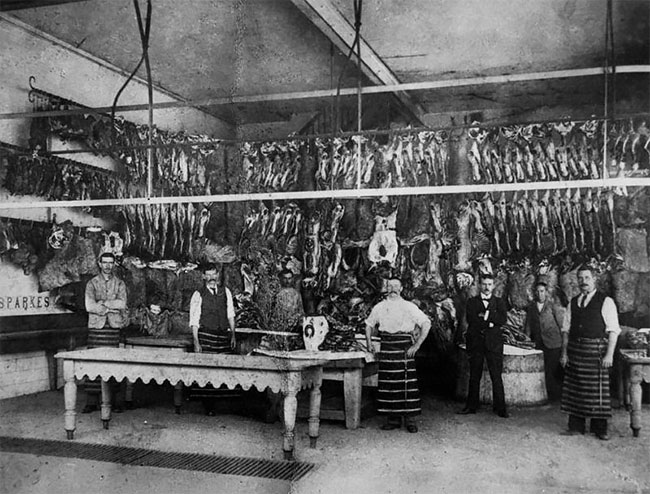In the Days Before Fridges: Vintage Photographs Show Butcher Shop Fronts In The Victorian Era

Although the Victorian times might be remembered for dodgy health and safety and questionable pie fillings, the 19th century saw a huge shift for the local butcher. According to food historian Annie Gray: “Butchers were busier than ever as Britain urbanized rapidly, becoming the first country in the world where more people lived in towns than in the country in 1851.”
h/t: vintag.es

Victorians ate a lot of meat, and you could even say that we might owe the culture of nose-to-tail eating right down to them. Not one single part of the animal was wasted, with the animal divided in terms of cuts and their tenderness.

The upper classes bought large feasting joints, the bigger the better, for their three meals per day, each of which were based around meat. Bones were bought to flavor soups, and less meaty and less tender cuts were sold to the poor including salted fat for nutrition. There’s even stories of blood being sold by the pint for drinking – supposedly good for combatting Tuberculosis.

Shopping at the butcher was usually done daily, thanks to the lack of refrigeration. To combat this, salt preservation was huge, and helped to keep pieces of meat fresh for longer during warmer times. Things started to change a little towards the end of the century, when beef was kept in an ‘ice safe’, with ice delivered by the rather ominous sounding ‘ice man’ who delivered huge iceberg-like blocks one his horse drawn cart.

Animals taken to the butcher shop were brought from around an ever-growing London, in more rural areas, and drove through the city to markets where they were slaughtered on spot and sold, and believe us the demand was high.

The Victorian era was characterized by the ‘eat, drink and be merry’ attitude, with the main part of their diet based around meat consumption. Tables were stacked with feasting joints made to look gruesomely lifelike – whole rabbits, whole birds and legs of pork with trotters still attached, and game birds with the heads and legs still on.
Annie notes: ‘Eating meat continued to be a mark of prestige and wealth, especially roast meat, always carried out on a spit in front of an open fire.’












